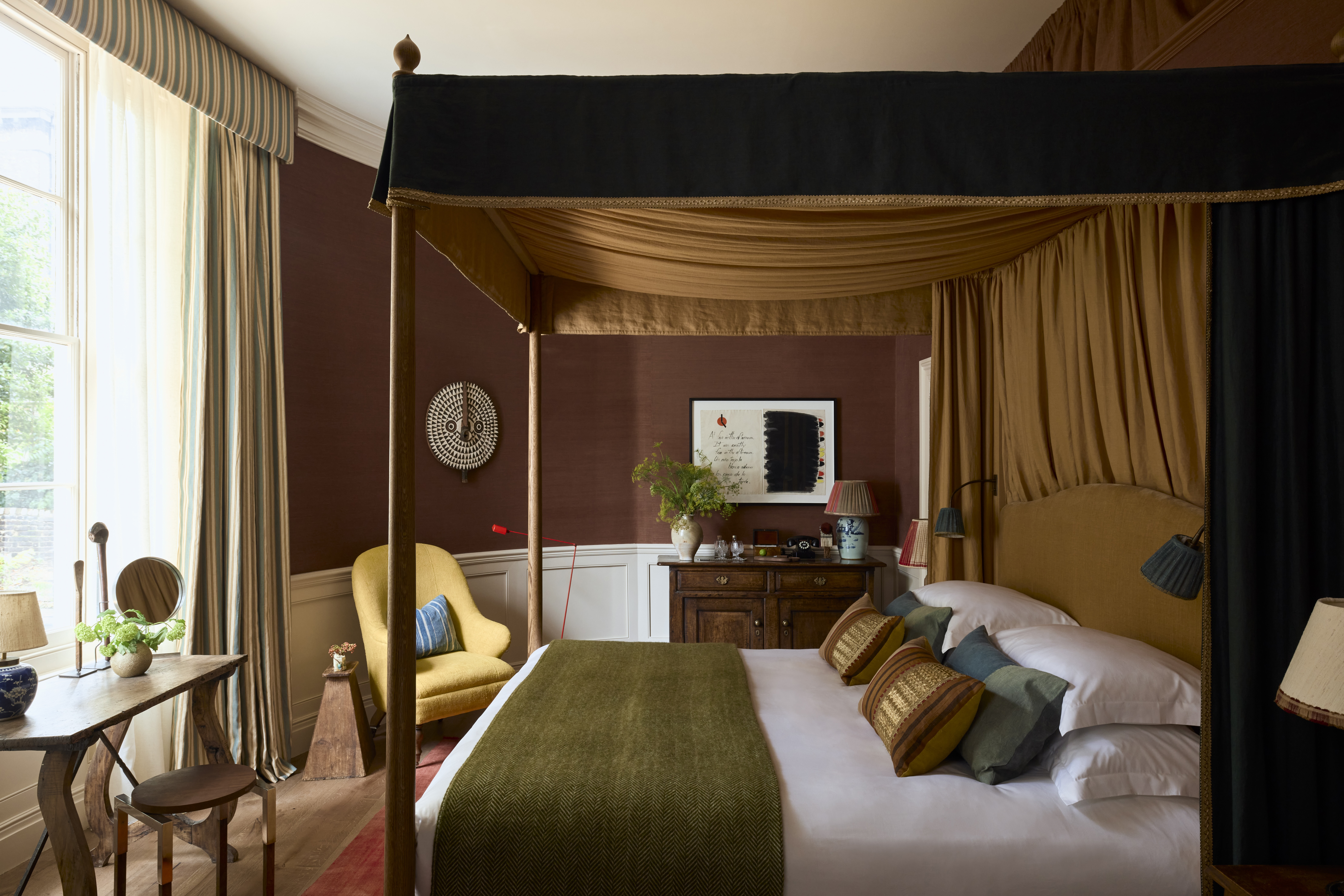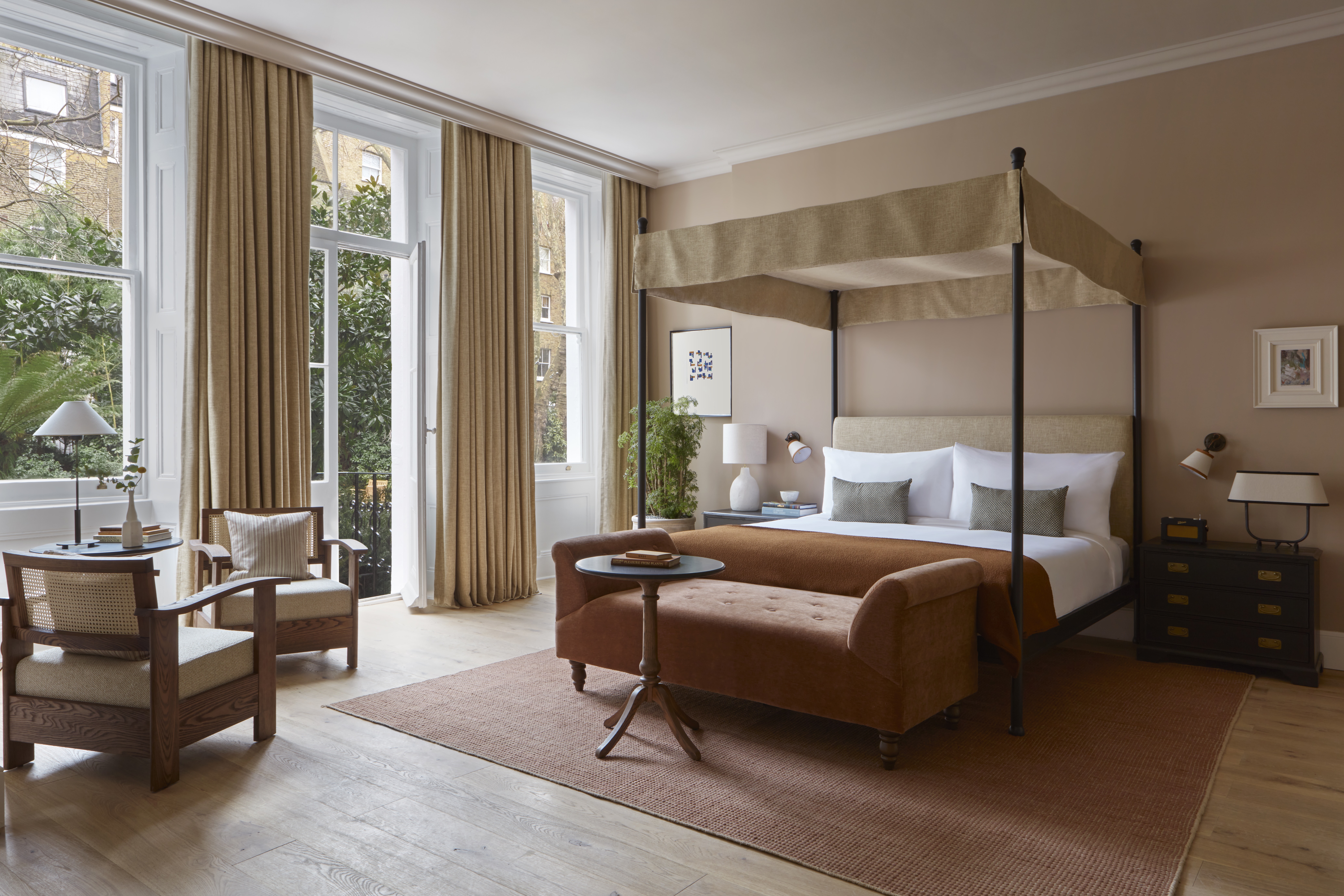Why four-poster beds aren't for historic houses alone
Four-poster beds aren’t for historic houses alone. A new generation of designers is using them to create a pared-back contemporary look.


In an era when space is a valuable commodity, a four poster might seem an anachronism. However, when the interior designer James Thurstan Waterworth was asked to breathe new life into Templeton Garden, a revamped hotel in west London, he decided scale was the secret to injecting drama. ‘The aim was to refer to the history of the building, as well as introducing a contemporary, simplified look that felt young and fresh and wouldn’t detract from the garden views.’ A pared-down four-poster bed was the obvious choice; its crisp, clean lines and classic form strike a balance between modern and traditional. Designed in-house and crafted from blackened metal, it features a straight box pelmet with smart corner pleats in a honey-toned linen and cotton-blend fabric.

Clean lines and classic form: the Garden Suite at the new Templeton Garden hotel.
Increasingly, four posters are being reimagined as viable options for almost any shape and size of bedroom. ‘I’m a great believer in four-poster beds,’ says antique dealer and interior designer Max Rollitt, who has owned some glorious examples and has often taken the opportunity to template them before they pass onto their next owners. ‘The beauty is that we can take inspiration from these grand forebears, but they can be made to contemporary proportions. This way, you get the fantastic form and ornament of an antique in something that’s slightly more practical for a 21st-century home.’

Out for the Count bed, designed by Nicola Harding.
Interior designer Henriette von Stockhausen of VSP Interiors says that each of her projects has at least one, if not two four-poster beds. ‘I love using a four poster in guest bedrooms in particular. It’s spoiling for any guests, who feel cosseted and protected.’ In her view, the beds add drama to a room, regardless of how much space there is. They also add interest to a room that lacks personality. ‘I have a friend who inherited a heavily carved Jacobean four-poster that just about squeezed into their spare bedroom with only a yard or so around it. It’s transformed what was previously a nice, but not remarkable room into a special and cosy space we all love to stay in.’ Nicola Harding, another interior designer who champions four posters, agrees. ‘The vertical posts can draw the eye upwards, creating the illusion of height in even the most diminutive of spaces,’ she says. ‘Using them in small bedrooms gives the space an identity: the eyes are drawn to the frame that fills the room and you quickly lose sight of the area around the edges.’
Restraint is the key to ensuring that a four poster is relevant. ‘I don’t like anything too frilly,’ says Henrietta. ‘I think everyone is more comfortable with a more streamlined look.’ Her designs tend to involve layering fabrics, always with an antique element, even if it’s only on the headboard or braid — to ensure the overall result isn’t completely new. There’s also the option of dressing all four corners, the sides alone or going without entirely. In a project in a Grade I-listed house, she used a four poster clad in antique mirror panels with the inside of the canopy lined in a simple silk and an antique suzani at the back. ‘The juxtaposition between the old and new injected great energy in the room,’ she says. ‘A number of my clients have moved into their parents’ houses and want to refresh the interiors to feel a little cleaner and less formal and a more modern treatment of a four-poster bed is one way to address that need.'
Exquisite houses, the beauty of Nature, and how to get the most from your life, straight to your inbox.
